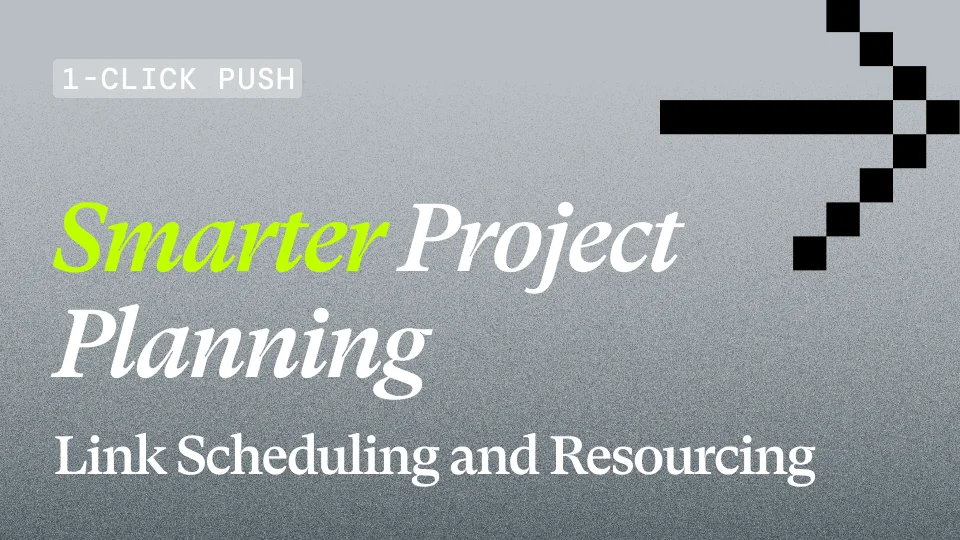6 Costly Resourcing Mistakes & Resource Management Software Fixes

Running a streamlined consultancy is hard. Demand is lumpy, teams are distributed, clients expect speed, and delivery costs keep pressure on margins. Here are the Top 6 project resource management mistakes consulting firms make every day - and 6 fast fixes that’ll protect your firm’s profit and wellbeing.
If your resource management planning still lives in spreadsheets, emails, and meetings, this guide is for you. Start with one habit, then layer in a purpose-built resource planning tool that unifies your project and resource management so plans, budgets, and staffing run from the same source of truth.
Mistake 1: Senior People Resourced On Junior Work
When project resource management lives in chat threads and spreadsheets, the most familiar name gets the job. Seniors pick up low-skill tasks and delivery costs rise even when the project budget does not.
Fast Fix: Centralize skills, rates, and availability so every assignment starts with capability, not habit. Graduating to modern resource management software lets you filter by skills and costs before you assign people to projects.
Mistake 2: Busy-Season Peaks Not Built Into Resource Management Planning
When seasonal surges aren’t baked into your project resource management processes, you burn future profits with rushed hiring or pricey contractors. On the flip side, if you don’t have a resource planning tool that spots future demand dropping, you’ll burn it all on a full bench.
Fast Fix: Build a peak-load playbook that covers overtime rules and vetted contractors. A forward-looking project planning tool will help you spot the peaks and troughs, ideally months before they hit.
Mistake 3: Manual Project Resource Management Lagging Behind Project Reality
Copy-paste project and resource management plans and Slack approvals create version nightmares, missed handoffs, and resourcing calls made from gut-feel rather than live data.
Fast Fix: Standardize your resource management planning with templates and check-ins the team actually use. Or let a resource planning tool automate it all instead - no spreadsheets needed.
Mistake 4: Disconnected Project Management Spreadsheets Hiding The Bigger Picture
If every delivery lead has their own resource management planning spreadsheet, your team will end up making every resourcing decision in a silo - and miss the bigger knock-on effects each one of those decisions has on your firm’s profitability.
Fast Fix: Name a single source of truth for capacity, budget, and progress, then update it regularly - it doesn’t need to be perfect, just true. If that sounds like a lot of admin, you’re right. A well-integrated resource management software tool like Projectworks will do the same thing, in a lot less time.
Mistake 5: Resourcing Red Flags Not Spotted Until It’s Too Late
Without an integrated project planning tool, burn and margin issues tend to only surface at month end when fixes are expensive - or worse - impossible.
Fast Fix: Give delivery leads burn and margin data - the more real-time the better, but even weekly is better than nothing. Bonus points if the data is shared live via resource management software - that way your delivery leads will be able to take immediate action by re-scoping, swapping roles, or escalating scope creep to decision-makers.
Mistake 6: Disconnected Project Planning Tools Creating Admin Fatigue
Every consultant wants better project resource management - what they don’t want is the admin overhead that comes with it.
Fast Fix: Don’t give your team a new spreadsheet to update. Start with one project and resource management habit you can sustain, then once the benefits are clear, move to a resource management software that lifts your firm’s resourcing game, without adding to their admin burden.
TL;DR: Upgrade capacity with end-to-end resource management software
Profitable project resource management is about seeing reality sooner and acting faster. Start with one habit this week. When you are ready, replace spreadsheets with purpose-built resource management software like Projectworks so your team can make confident client commitments, deliver with less stress, and protect margins. Book a demo to see your firm’s ROI.
Related Articles

3 Project & Resource Management Upgrades MBB Made In Order To Grow Their Team By 300%
MBB Group is a high-growth independent advisory business, with a reputation for solving some of Australia’s toughest infrastructure challenges. As Australia’s infrastructure pipeline began to scale rapidly, so too did MBB’s team of energy, transport, water, mining, defence, logistics, and social infrastructure experts.

